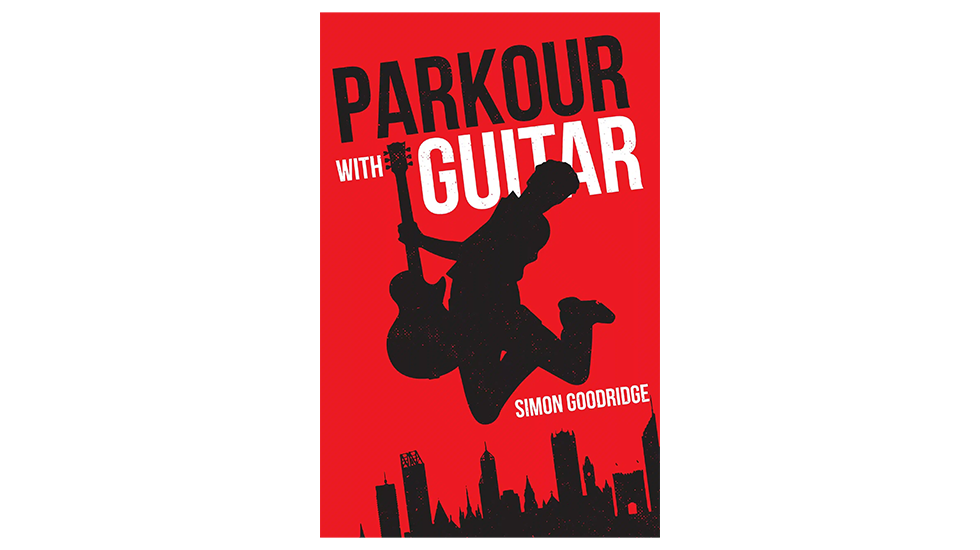
Review: Simon Goodridge’s Parkour with Guitar
Simon Goodridge
Parkour with Guitar
Atmosphere Press
Parkour with Guitar is a fascinating Western Australian memoir, a personal journey through the harrowed halls of rocknroll Perth. From the heady 1980s to the mellowed 20-naughties, songwriter, guitarist, and singer Simon Goodridge worked it to the hilt and lived it all.
With, among others, the seminal original bands Silent Type and Never Never, Goodridge played all the key venues—The Embassy Ballroom, The Cott, The Shents, The White Sands, Hernando’s Hideaway, and The Stoned Crow—and supported many of the major national and international touring acts, including The Clash, The Pretenders, INXS, and The Divinyls. Although he never ascended into the ether of international rock god-dom, he has survived to tell the tale. And tell it he does in an idiosyncratic and roiling rocknroll style.
He hung his various, often later lost, guitars around his neck, was drawn completely into the local scene, and quartered at a sharehouse in John Street, courting an array of lovely women along the way. He toured de forces to Sydney and tripped a light fantastic through Europe, skipping the fandango as he parkoured his guitar. He met the recording label devils at the crossroads and regretted not selling them his soul.
Get the idea?
Parkour prose par excellence, he rocknroller-coasters you through a gripping read that, for those of a certain age, evokes the temper and texture of that time—the legendary gigs, the long shutdown venues.
It is a different scene now; the city has grown up and is no longer so far from the world. Perth bands can now compete more equitably with those from other cities, though they still must travel to the other cities to complete. In this regard, Goodridge was a pathfinder. He knocked on the doors that others have since broken down. But maybe they wouldn’t have been able to break them down had Goodridge and his contemporaries not gone knocking first?
The abiding strength of the book is Goodridge’s unique prose; the abiding strength of the story is his resilience and adaptability. He struck at the coalface for the best part of twenty years, still lives for music, and continues to perform. Once his glory days were over, he adopted a more low-key approach. Between the odd reunion gig, he has worked solo or in simple collaborations. He has mastered computer production and posted his songs online. His day job now is as a gardener, which pays the mortgage and leaves him free to remain creative and vital. Most importantly, these days he is content with his lot and at peace with his past; he views his former driving ambition with understanding and humour.
The book is not without its flaws. The main one is that the style sometimes overwhelms the substance. The wittily punned cultural references and twists of famous lyric lines flow too readily from his pen, leaving the sense that he may be more interested in them than the story. Less art, more matter, or, as George Harrison sort of said, “it’s better to support the song than play a thousand notes a second.” This is a pity, as, with a bit of work, the book could easily transcend the personal memoir that it is and become a bona fide history of the scene and the era.
Two examples.
Goodridge only ever refers to his bandmates by their first names; a glossary of their full names by band would help. If you know the scene a bit, you will suspect that the legendary drummers he later played with, Reg and Howie, are likely Zar and Johnson, Hayden the bass player, and probably Pickersgill, but without that extra knowledge, the first names alone mean little. Granted, writing them all out in full every time may disrupt the rhythm of his prose, but the relentless run of first names alone sells his comrades short. Goodridge knows who they all are, but we don’t, and it would enrich the story if we did.
Similarly, in the chapter at the crossroads, Deal or No Deal, where the lawyer talked the band out of signing the international five-album contract, the dream Goodridge had spent a decade pursuing, it would have helped if we were told the catch that caught in the lawyer’s craw and convinced them not to sign away their souls. Even though to this day Goodridge regrets the decision, clearly the argument that swayed them must have had some substance. Knowing this would be useful advice to those who wish to follow in their footsteps. Even if the answer were simply not to take your lawyer’s word at face value, which is what he seems to imply and bemoan, it would have helped had he spelt that out and pulled it apart, not skipped over it in a run of flip platitudes.
But within the terms Goodridge sets for himself in the grand scheme of his book, these can be forgiven as he toes the line between a gripping read and something of greater significance.
The penultimate chapter, The Old Man and the Sea, where he moves away from music to look after his ageing, now passed, father, is the most poignant in the book. In this, he finally comes out from behind the style to speak from the heart. The book might be stronger had he injected a little more of this into the earlier chapters. But then again, the journey he had to make was from youthful, starry-eyed enthusiasm to wiser, older age, and he successfully maps this in witty, often erudite, vivid, and engaging prose.
Parkour with Guitar is a salutary tale of the rocknroll life—the highs and lows and everything in between—that ends in redemption and an acceptance of fate. A great read—at 110 pages, a swift one.
Published by Atmosphere Press, Parkour with Guitar is available on Amazon and at New Editions, Planet Books and Collins Bookshop. Simon Goodridge’s music can be found on his YouTube channel.
IAN LILBURNE
